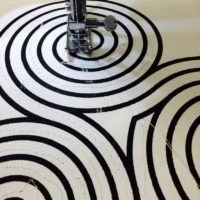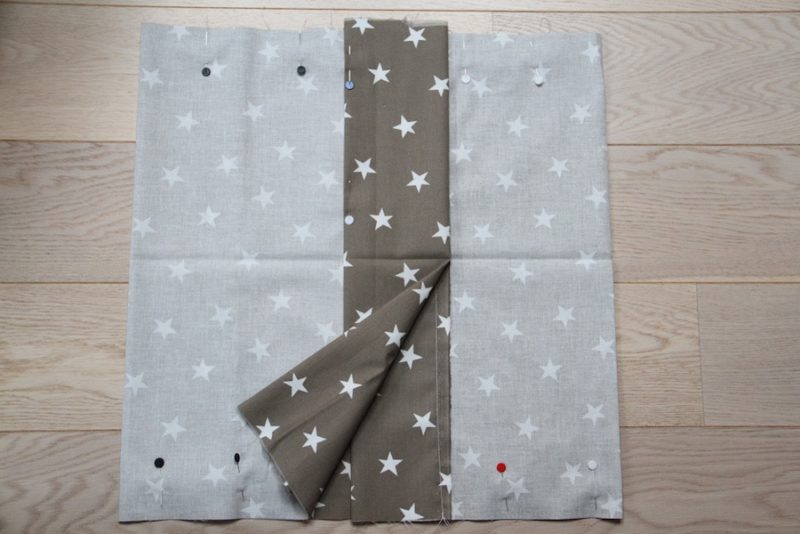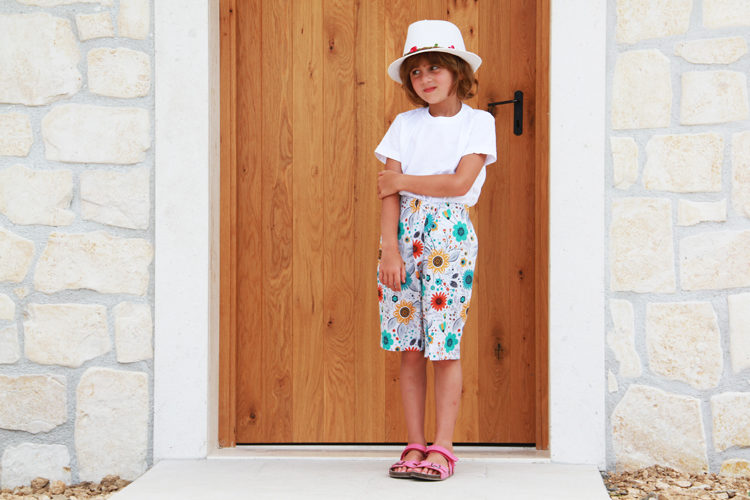All beginning sewers must learn how to sew straight and curves lines on their sewing machines. If you want to learn to sew well, don't skip the basics. You may be bored with the idea of sewing pillows and placemats, you may be tempted to start sewing clothes straight away. But sewing is the same as any other craft. It is good to learn the basics correctly and then build on them. There is nothing worse than learning bad technique and getting stuck later when it comes to more complicated matters. So, it is very important to learn to use your sewing machine correctly and to have full control over it. It's a lot like driving - it's a good idea to try it in a parking lot before entering the highway.
It is very important to learn to use your sewing machine correctly and to have full control over it.
When I started sewing as a little girl, I encountered a lot of setbacks, but in the end, I overcame them because I always liked to learn new things. But I have to admit, I started with very simple (and boring) things...
Training - Building a solid foundation
At first, I sewed without a thread - I had my sewing machine, but no thread. And instead of fabric, I used paper. At the very beginning it was blank and my only task was to start sewing and stop sewing. Starting meant putting the presser foot in the lower position and depressing the pedal. Stopping meant slowing down and releasing the pedal without trying to slow down the paper with my hands. It was hard at first, I was afraid and my hands and legs didn't work together that well, so when I saw that I was approaching the end of the paper and wanted to stop, it took time for the brain to instruct my leg to release the pedal. At the same time, I always started pulling paper from under the machine with my hands. So, I tore the paper many times. In fact, it took me quite a long time to learn and stop fighting the machine.
When I was able to sew white paper, I stopped being afraid to start and I had control over when and how to stop, so I moved to the lined paper. Still no thread. At first, I tried to sew between the lines. That was relatively easy. My “seams” were crooked and uneven, but they were between the lines. Gradually, I moved to the next level. I tried to sew exactly on the line, and let me tell you, it was horrible at first. It took a lot of hours and a lot of lined papers before I could handle it.
It took me quite a long time to learn and stop fighting the machine.
And when I was satisfied with my straight lines, I sketched wavy lines on paper, big and small, and I tried sewing in curves. First again between the wavy lines, later exactly on them.

Draw various shapes and try to sew along them…
It may seem really boring and annoying, but if you really want to learn to sew and control your sewing machine, you can also try it. I'm not saying that it will work for everyone, but it's a great way to learn without sewing through your fingers and destroying a lot of fabric.
Gradual improvement - Building on a solid foundation
When you get tired of the paper, move to the fabric. Start with woven fabrics (rigid materials). Regular cotton canvases are the best for this. They are easy to work with and they do not slide around or stretch. You don't even have to buy new fabrics for your first attempts. Do you have shirts that no one wears anymore? Old sheets that you haven't used in years? What about the old spotty tablecloth? I think that every household has something that is no longer needed, it lies somewhere in a drawer and has no use. These are the ideal sources of material for training and the first attempts.

Sewing woven fabrics is very similar to the previously mentioned "sewing" of paper. Try straight seams first. You can try to sew a simple bag, placemat or pillow. At the beginning, don't try to sew anything complicated. Simple straight sewing will suffice for now.

Don't cut corners
Don't try to cut corners while learning - it's not about finished products (yet), it's about learning to sew confidently and correctly. Knits are all the rage right now, and I often see beginners trying to sew them. I definitely do not recommend that. Sewing knits (and other elastic materials) requires practice, mastering the sewing machine, knowledge of different textile materials and their properties, as well as knowledge and experience needed to set up your sewing machine correctly, so that you can sew elastic fabrics at all…
Practice makes perfect & perseverance is the key
I know, I know, this can be boring and you are definitely looking forward to more complex projects - to sewing clothes for yourself, for your children and so on. So, when is the right time to move on to sewing such pieces? This is a very individual matter. Start after mastering the previous steps and simple projects - when you are confident and satisfied with the results. It's up to you, but if you really want to learn how to sew nice clothes, don't look for any shortcuts. Have patience and don't be too hard on yourself. Can't sew curves? No problem! Take a break, come back tomorrow, and then the day after tomorrow... Don't give up, work of yourself and the results will come naturally. I promise you that! Perseverance is the key to success!
Have a nice day, Peťa




















